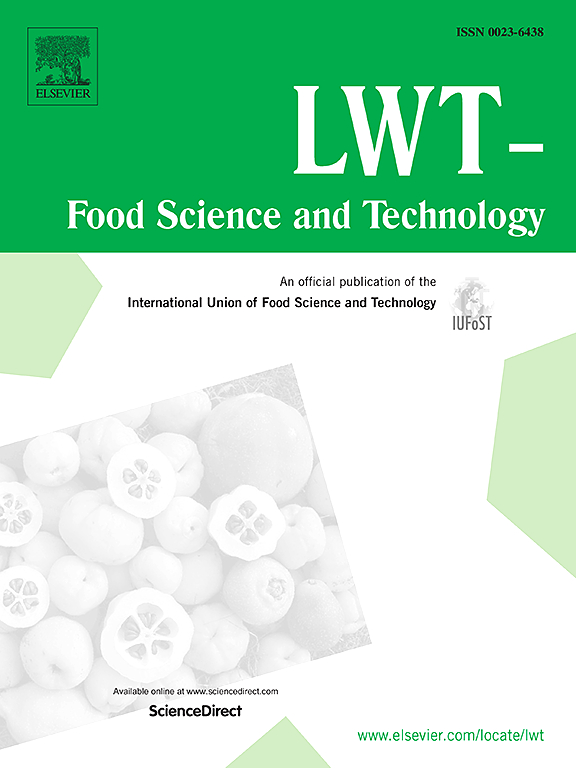Comparison of the quality attributes of oils extracted from irradiated and non-irradiated tiger nuts by different methods
IF 6.6
1区 农林科学
Q1 FOOD SCIENCE & TECHNOLOGY
引用次数: 0
Abstract
In this study, tiger nut oil was extracted from irradiated and non-irradiated tiger nuts with four different methods, namely cold pressing (CPE), hexane extraction (HE), aqueous enzyme extraction (AEE) and supercritical fluid extraction (SFE), and the quality characteristics of the obtained oil were determined. Results indicated that gamma irradiation increased the oil yield by 6.02–7.30%, depending on the extraction method used and had a negligible effect on the fatty acid composition of tiger nut oil. In addition, gamma irradiation significantly increased (p < 0.05) the acid value, peroxide value, K232 and K268 of oil, and reduced the amount of vitamin E, total phenolic, carotenoids and chlorophyll in the oil as well as its oxidation stability. However, the FTIR spectra of the irradiated and non-irradiated oil samples were almost identical. The above changes were verified in the oils obtained with different extraction methods. A total of eight irradiation-induced hydrocarbons were detected in the irradiated oil samples, mainly 1,7-hexadecadiene, 1-tetradecene and 8-heptadecene. The extraction method had no effect on the composition of radiolytic hydrocarbons, but the amount of radiolytic products in the oil extracted by SFE was much higher than other methods.
用不同方法从经过辐照和未经过辐照的虎皮果中提取的油的质量属性比较
本研究采用冷榨(CPE)、正己烷萃取(HE)、水酶萃取(AEE)和超临界流体萃取(SFE)四种不同的方法从辐照和非辐照虎坚果中提取虎坚果油,并测定了所获油的质量特性。结果表明,根据萃取方法的不同,伽马辐照可提高出油率 6.02-7.30%,对虎皮果油脂肪酸组成的影响微乎其微。此外,伽马辐照还显著提高了油的酸值、过氧化值、K232 和 K268(p < 0.05),降低了油中维生素 E、总酚、类胡萝卜素和叶绿素的含量及其氧化稳定性。不过,辐照过的油样和未辐照过的油样的傅立叶变换红外光谱几乎相同。上述变化在采用不同萃取方法获得的油中得到了验证。在辐照油样中总共检测到八种辐照诱导的碳氢化合物,主要是 1,7-十六碳二烯、1-十四碳烯和 8-十七碳烯。萃取方法对辐射烃的组成没有影响,但 SFE 法萃取的油品中辐射产物的含量远高于其他方法。
本文章由计算机程序翻译,如有差异,请以英文原文为准。
求助全文
约1分钟内获得全文
求助全文
来源期刊

LWT - Food Science and Technology
工程技术-食品科技
CiteScore
11.80
自引率
6.70%
发文量
1724
审稿时长
65 days
期刊介绍:
LWT - Food Science and Technology is an international journal that publishes innovative papers in the fields of food chemistry, biochemistry, microbiology, technology and nutrition. The work described should be innovative either in the approach or in the methods used. The significance of the results either for the science community or for the food industry must also be specified. Contributions written in English are welcomed in the form of review articles, short reviews, research papers, and research notes. Papers featuring animal trials and cell cultures are outside the scope of the journal and will not be considered for publication.
 求助内容:
求助内容: 应助结果提醒方式:
应助结果提醒方式:


